
Shawinigan Cataractes
Arena Name: Aréna Jacques-Plante
Capacity: 3,700 (2,524 seated)
Built: 1937
Address: 855, rue Broadway, Shawinigan, QC, G9N 8B8
Last Game: 2008
Ice Surface Size: Regulation
More Pictures: Click Here
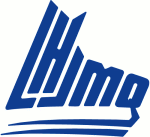
Aréna Jacques-Plante
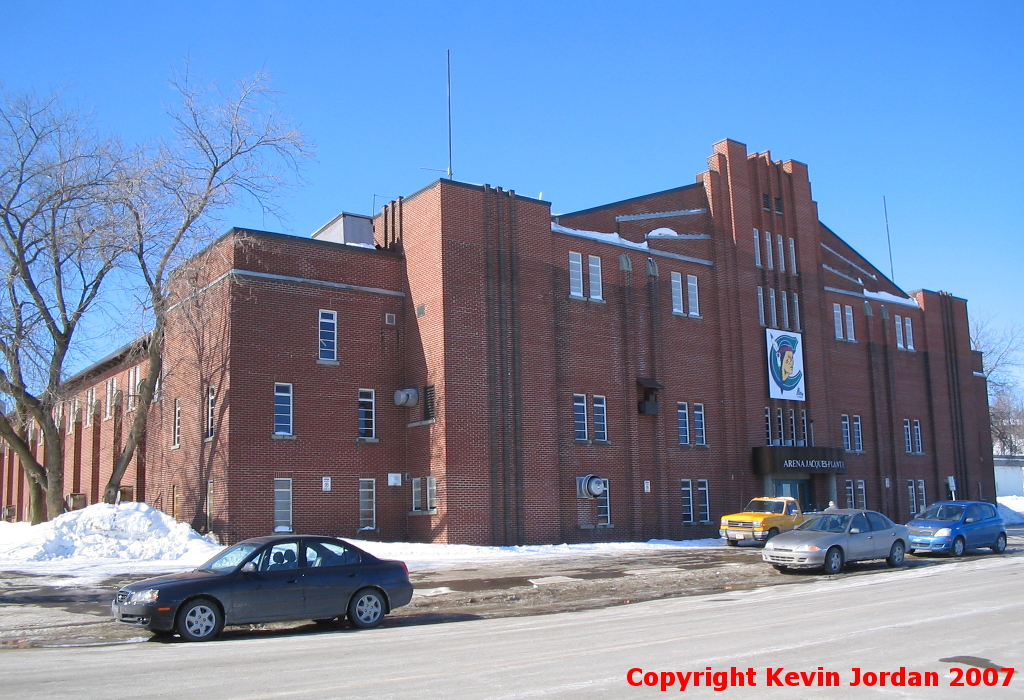
What Was the Arena Like?
First Visit: October 17, 2008
CHL Arena: 35
QMJHL Arena: 10
At the time it closed in December 2008, the Arena Jacques Plante in downtown Shawinigan, Quebec, was the oldest arena in the QMJHL and the second-oldest in the CHL. While the Windsor Arena, which had closed a mere three weeks before, trumped Shawinigan by being thirteen years older, make no mistake about it - in spite of Windsorites' complaints about their run-down old barn, at least they had use of such amenities as plastic seats and a centre scoreboard. Shawinigan had none of those things. Instead, they had uncomfortable wooden seats, fat iron support columns blocking views, dirt and grime everywhere, and, in spite of everything, one of the most quirky, lovable hockey rinks in Canada. Like the old Comiskey Park in Chicago before it was demolished, Shawinigan wasn't a lyric little bandbox; it wasn't a place for suburban families or tourists or corporate types making deals. It was a place for diehards to watch hockey, in an environment that was almost completely unchanged from the day it opened 70 years ago.
Located on the edge of Shawinigan's lively downtown and wedged onto a city block on the banks of the Saint-Maurice River, the Arena opened under the name of the Shawinigan Municipal Auditorium in 1937 (the name was changed in 1994). It was and remains a tall, red brick building done in the Art Deco style, with windows dotting the building's exterior. Ivy covers much of the wall surface on the sides and rear of the rink. The only newish artifice anywhere was the giant Cataractes logo over the main entrance, along with a new sign giving the building's new name. In spite of that, if you looked up as you passed through the front door, you could still see the building's old name etched in stone above the door underneath the new sign.
On gamedays, the arena had an intimate feeling that began from the moment you parked your car outside in one of the tiny lots nearby. The ancient arena lit up at night and its downtown setting made it feel like you were visiting somewhere special. Once inside the rink, the building's ticket lobby was tiny and led directly into the main seating area. It filled up quickly on gamenights, but as an old arena with no public "standing" areas, there really wasn't anywhere else to go. The lobby was quickly passed, your ticket was ripped, and you found yourself stepping back in time.
A ring of coloured wooden bench seats, painted bright red, blue and green, surrounded the ice, with a mini-concourse about halfway up the seating area. Above that on each side was just wooden benches, with no seat backs. Support columns came down from the ceiling in each section to hold the roof up. Directly behind one net, there was a second tier of yellow seats extending to the roof, which ultimately gave the building layout a similar feel to the Peterborough Memorial Centre. The seats were all constructed with 90-degree seat backs, which was about as uncomfortable as it sounds. As mentioned, there was no centre scoreclock or other amentities - the building really is nothing more than wooden seats surrounding a sheet of ice.
As you might expect from an arena that was so old and that had never been renovated, the peripherals were all old and poor. Washrooms were few and far between. Bottlenecks occurred frequently on the main concourse throughout the seating bowl, as the concourse also doubled as standing-room. A pair of party suites had been carved out of the walls near the upper level seating, but other than that, there was little in the way of segregation of seating. Finally, a small canteen-style restaurant sat under the yellow upper deck, and prices, as per usual in the QMJHL, were pretty reasonable.
The Cataractes organization did a good job making the place feel like home. The team's souvenir kiosk, near the front lobby, spilled out into public areas and was clearly visible from all points in the building. Banners dotted the ceiling. The seats directly behind the support columns were avoided unless the building was sold out, and the local cable company built what essentially was a plank that extended high over the seating areas so as to be able to shoot the game without having the columns in the way. People seemed free to wander around and find their own spot at most games, and the general admission bench seating at the top of the building was popular among young rowdies.
The most surprising thing, at least to me, about the atmosphere at the Shawinigan arena is that by Quebec standards it was only middle-of-the-pack. Part of the reason I love to travel to Quebec for hockey is that the people there are a lot less reserved than WASPy, sit-on-your-hands Ontarians can be, and so the crowd noise is outstanding at most rinks in the province. Shawinigan was loud by Ontario standards, but by Quebec standards it was slightly disappointing. The arena announcer tried to whip up enthusiasm as well, shouting "Go Cats Go" over the loudspeakers several times a game. However, my comrade and I spent the third period watching the game from the last row of the yellow seats at the back of the arena, and it seemed a lot louder up there, so it also just could be that the sound tended to rise due to the building's design.
The building's quirkiest - and least politically correct - feature is suspended above the yellow seats - it's a cigar store Indian, who holds a little "Go Cats Go" sign in his hand and was wheeled out after every home goal. The Indian is huge and really had to be seen to be believed. We were lucky enough to see the Cataractes score eight in a demolition of Rimouski, and so eight times a game, the giant Indian came wheeling out over the ice. By sitting at the back of the yellow seats, we were able to observe the setup in action - an old guy with a winch controlled him. I am not sure how the Indian is received politically in Quebec, but I will say that those easily offended by casual racism would probably be horrified, and hopefully that includes most of the people reading this. Shockingly, the Indian made the trip to the new arena with the team and is now in the rafters of the new rink down the street.
Although it's now sadly closed to the QMJHL, the Jacques Plante Arena was the most intact old arena in Canada, with virtually no signs inside that anything had changed in seventy years. We were there on breast cancer night, and pink abounded throughout the building, while the mascot, Shawi the Bear, went around collecting donations all game with a little can. It was interesting to see a mascot put to good use instead of silly capering, although a panhandling bear is one of those things I can honestly say I never expected to see in my life. With the crumbling old arena now replaced, I am very glad I got to see it before it closed. Time-travelling like this was not really possible anywhere else in the CHL.
To see a photo gallery of shots from my visit to Shawinigan, click here.
Inside Aréna Jacques-Plante
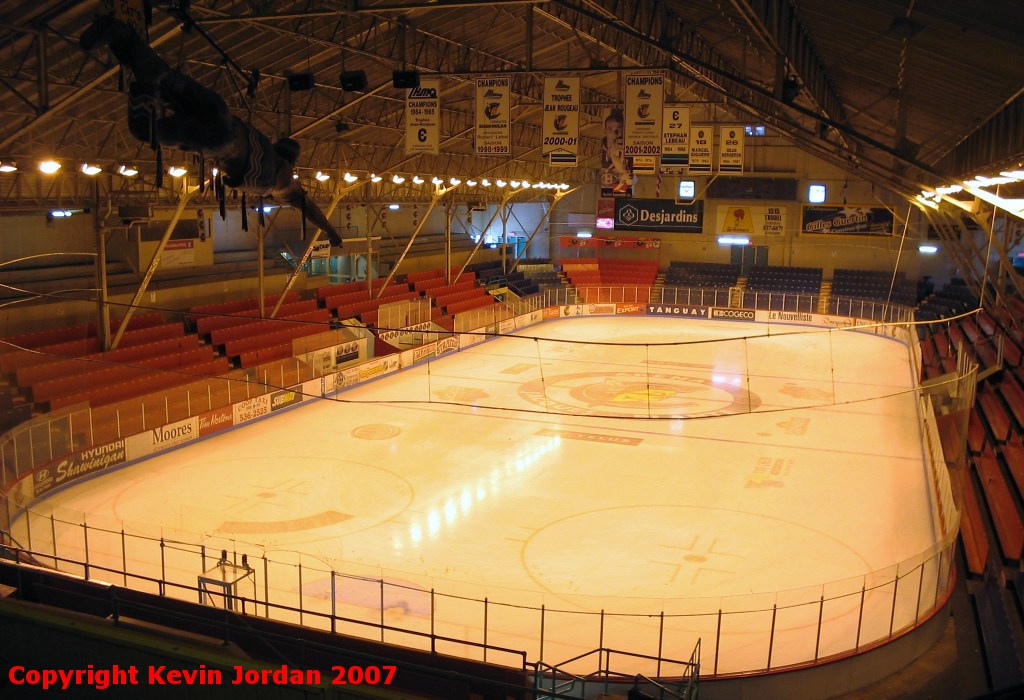
Inside Aréna Jacques-Plante
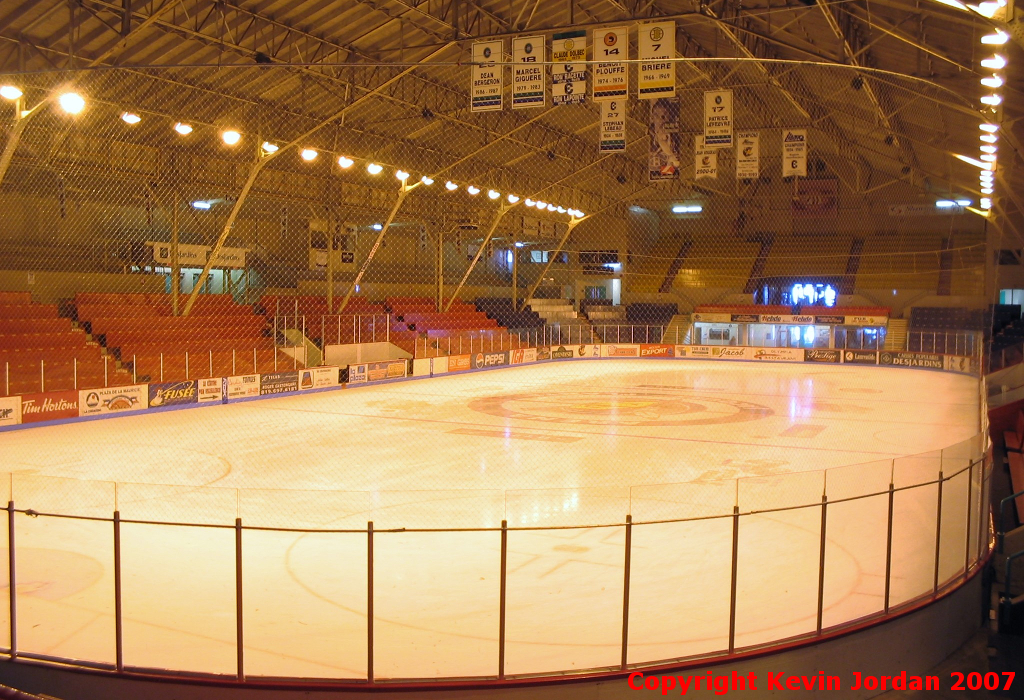
What's the Arena Used for Today?
Following the Cataractes' exit, the arena stayed open for another few years, but was eventually gutted on the inside and turned into an office complex, the Complexe Jacques-Plante. The art deco shell of the building still exists, albeit with a number of new windows installed in the brickwork. The primary tenants are the investment and insurance company Industrial Alliance as well as a branch office of Revenue Quebec.
Aréna Jacques-Plante Today
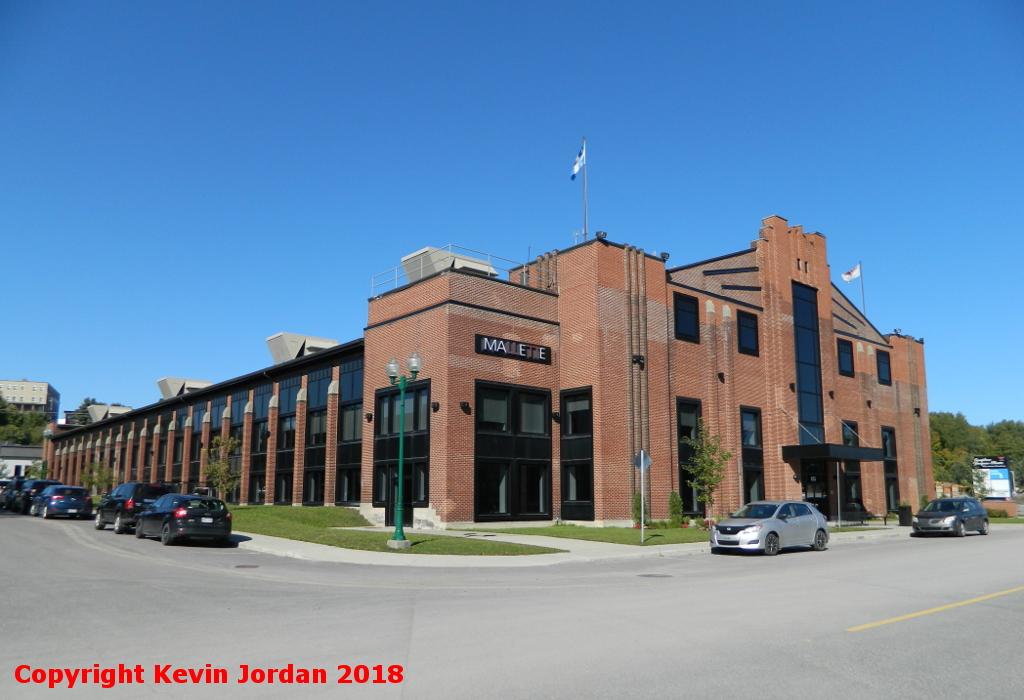
Feedback
If anything is incorrect or you have something to add, please e-mail me at  and I'll update the guide.
and I'll update the guide.
 and I'll update the guide.
and I'll update the guide.Copyright © QMJHL Arena Guide, 2002-19.
All rights reserved.
Last Revised: December 5, 2019